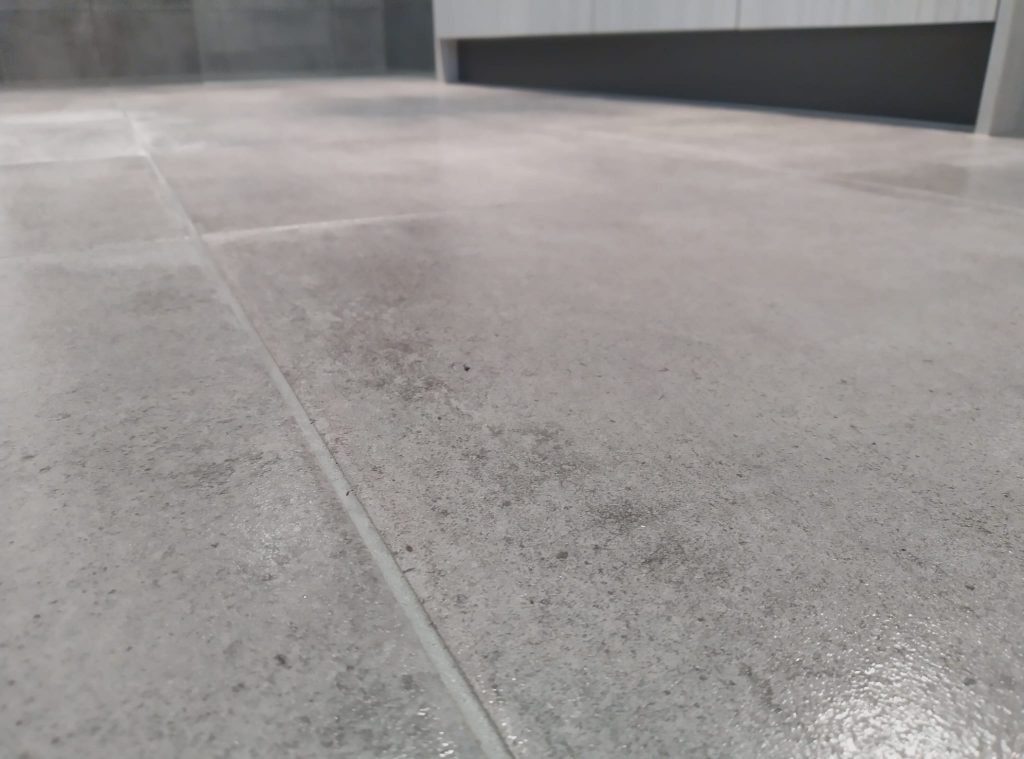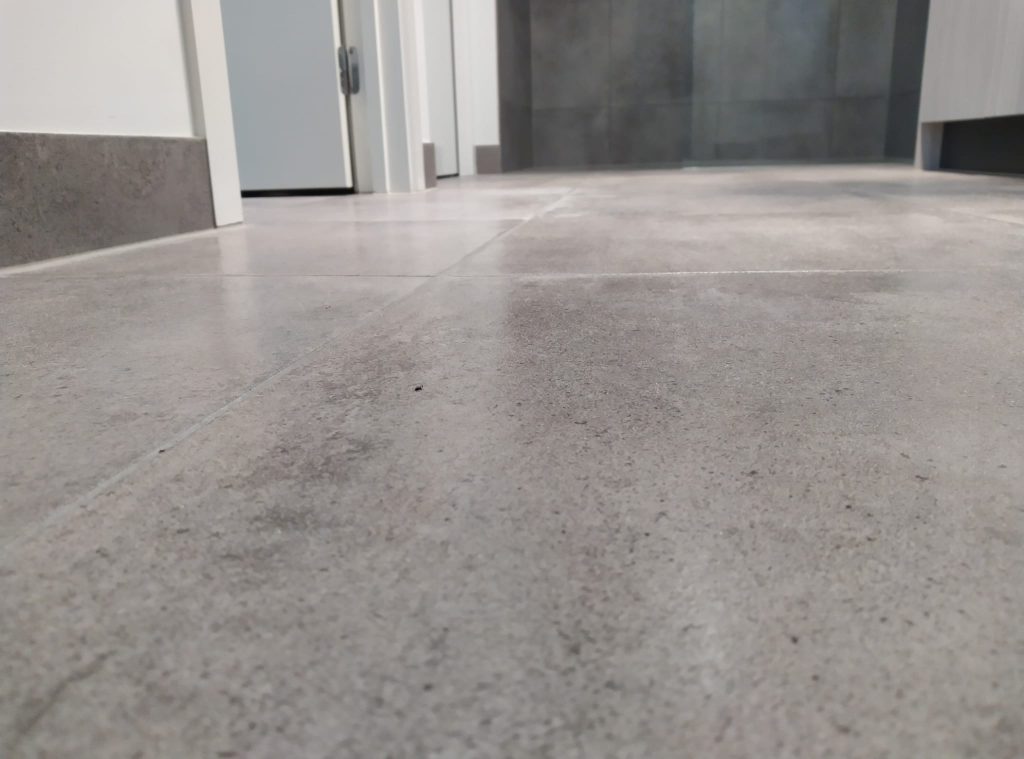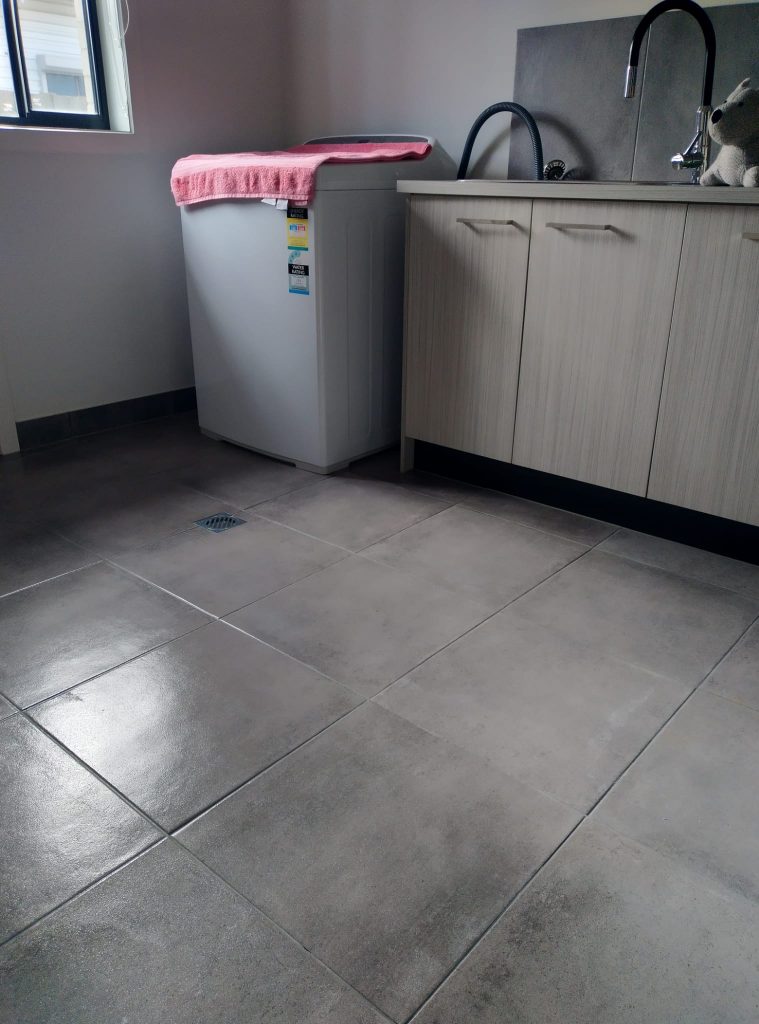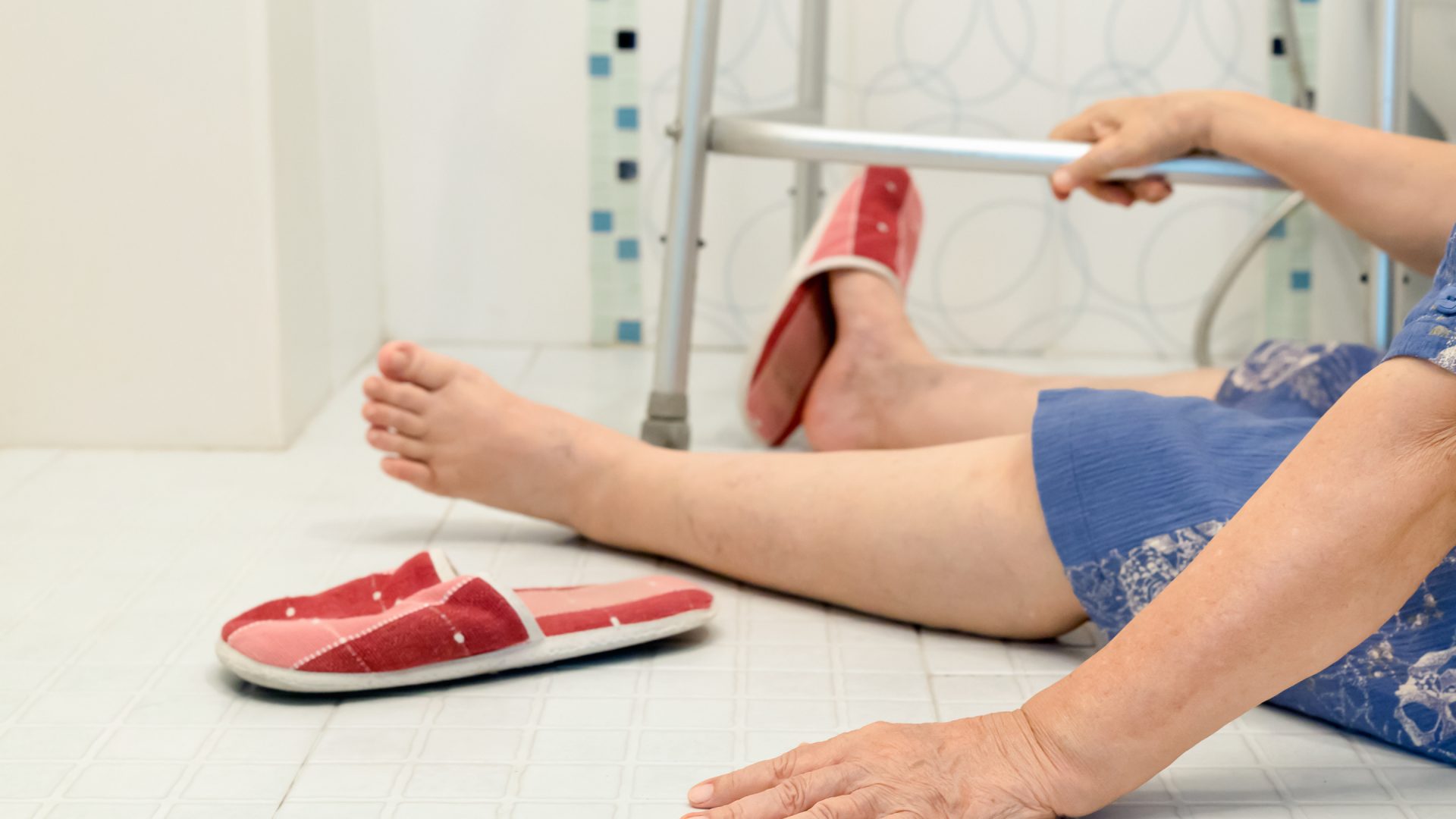Gillian lives in a small town near Geelong. She considers herself an active senior and likes to go for walks or meet up with friends over a coffee. She would never have imagined suffering a major injury due to a slip on her bathroom floor. Moreover, selecting the right non-slip solution was not as simple as it seemed.
In 2019, Gillian moved to a new house with a recently renovated bathroom. She was happy with her new home but quickly noticed a safety issue with the bathroom. In addition to new fittings, new floor tiles were also installed and these became extremely slippery in wet conditions.
“I walked out of the shower to grab my towel and I slipped.
I knew immediately that it was bad”
“I felt insecure with wet tiles in the bathroom when I had a shower,” Gillian explains. “The tiles were supposed to be slip-resistant but that was not the case.” Eventually, disaster struck. “About 12 weeks ago I walked out of the shower to grab my towel and I slipped. I knew immediately that it was bad,” said Gillian. And it was bad. Gillian’s slip caused a fracture in her neck, but she was fortunate not to be left paralysed. Once home from hospital, Gillian knew that she had to prioritise her safety and look for a solution to improve the slip-resistance of the tiles.
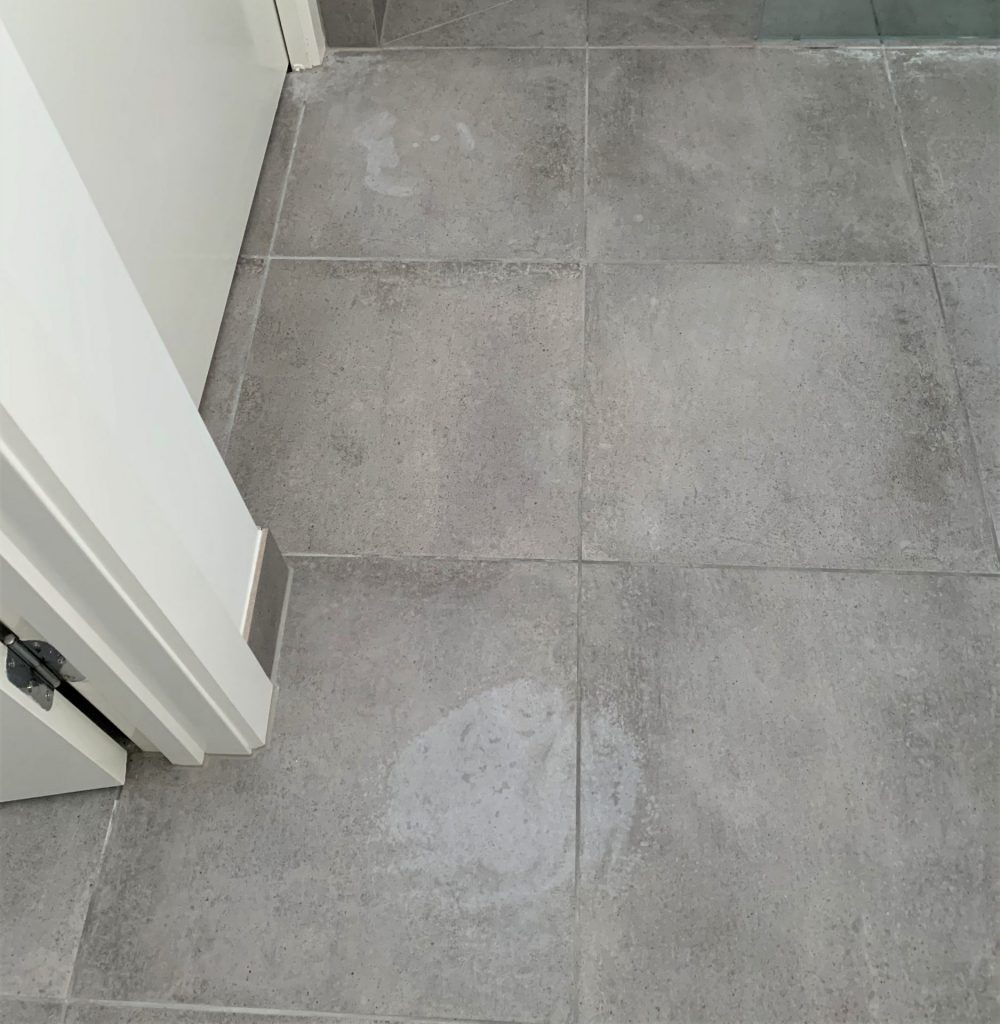
Anti-Slip Treatment: Another Disaster
Gillian’s daughter helped her Google search anti-slip solutions. “We found a company that specialises in anti-slip treatments,” Gillian explains. “I was promised the surface would become slip-resistant and the treatment would be invisible. Moreover, I would be able to walk on the surface straight after the treatment.”
“The job was completed in just 30 minutes,” says Gillian. Unfortunately, the results were less than satisfactory. “The treatment had stained and discoloured several areas of the bathroom and one of the stains looked exactly like the imprint of a mop, which I think is what was used.”
Worst of all, the anti-slip treatment did not improve the slip-resistance. “I felt the surface with my hand and noticed it was rougher, but when wet it was still as slippery as an ice-skating rink. This left me afraid of slipping again when showering, despite having assistance from my nurse. I paid over $1000 for an anti-slip treatment and all I got were stained tiles,” said Gillian.
“The man who completed the job said he was not responsible for the staining and that it was normal ‘wear and tear’ for the tiles I had,” an angry Gillian explains. “He refused to tell me the exact product he used and simply talked around the issue. This made me even more suspicious.”
Gillian also did not receive any customer service. “He didn’t come by to check my tiles and was adamant that the surface complied with the standards, so it didn’t matter if I still found it slippery. After a while he just ignored my calls,” she said.
Not all Anti-Slip Solutions are created equal
Gillian still needed a slip-resistant bathroom, so she conducted a more refined search on Google and found Swiss GriP Non-Slip Coatings. It proved she succeeded in selecting the right non-slip solution. “I was drawn to Swiss GriP as they appeared to offer an anti-slip coating rather than an anti-slip treatment. I was thrilled with the results and am now so confident in the shower that I do not even use the grab bars anymore.”
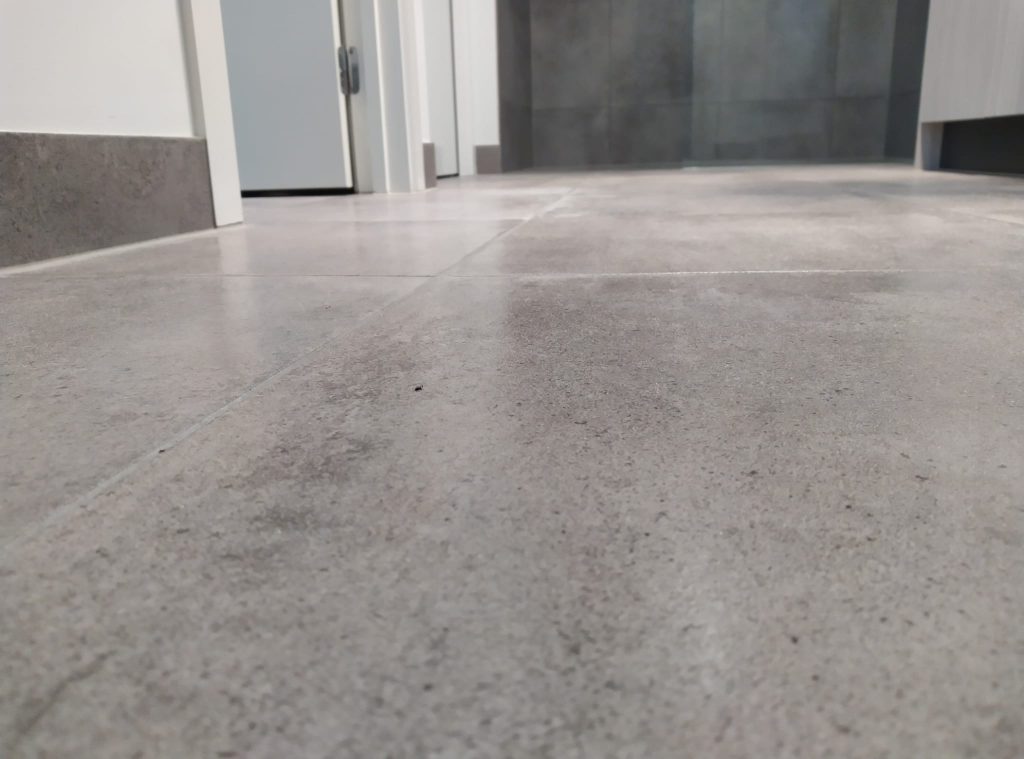
“Thank goodness I found Swiss GriP Non-Slip,” said Gillian. “I didn’t realise there was such a big difference between Swiss GriP and the anti-slip treatment,” Gillian continues. “The Swiss GriP installer told me that an anti-slip treatment etches into the tiles which can cause discolouration, whereas Swiss GriP is a coating that is applied to the surface, which prevents damage to tiles,” she said.
Certified Non-Slip Solution
Swiss GriP is independently certified by CSIRO in accordance with the Australian Standard for Slip-Resistance. “Swiss GriP sent me their CSIRO certificate which showed the slip resistance level,” said Gillian. “I just wish I had asked for an independent test-report from the first company I used.”
Another benefit of the Swiss GriP coating is that it is water-repellent. After the application, water does not disperse everywhere—it runs directly into the drain. Gillian found the coated tiles pleasant to walk on. “It feels a bit like walking on a wet, sandy beach and it’s non-abrasive,” she said.
Gillian hopes her story will increase awareness surrounding anti-slip treatments. “I don’t want anybody to experience what I have been through,” says Gillian. “There are many elderly or vulnerable people like me who require a slip-resistant bathroom and don’t have a lot of available funds. I don’t want them to be ‘ripped off’ like I have been by choosing a solution that doesn’t work.”
Gillian’s advice: “Always ask for a certificate which shows the slip-resistance and ask what kind of product they use. Be aware that anti-slip treatments are the same as etching treatments, not coating treatments.”
What is an Anti-Slip Treatment?
There are hundreds of anti-slip treatment (also known as ‘etching’ or ‘acid treatments’) providers in Australia. Many claim to have unique products but in fact they use the same chemical—hydrochloric acid. As you would expect, acid is extremely corrosive to living tissue and many materials.
Anti-slip treatments ‘work’ as the acid corrodes into the surface, subsequently damaging the seal of the tile. They can even dissolve the calcite naturally occurring in tiles. This is exactly what caused the discolouration of Gillian’s tiles and a good reason why acid treatments should not be used on sensitive materials such as marble, ceramic tiles or porous surfaces like concrete.
Anti-Slip Treatment: Not independently certified
Anti-slip treatments perform poorly in wet conditions, characterised by small cracks left in the tiles by the acid. These cracks fill quickly with dirt making the tiles extremely difficult to clean. This is why, generally one month after an anti-slip treatment, the anti-slip effect is undone and the surface is as slippery as it was before the treatment.
Another disadvantage is that anti-slip treatments react differently on various surfaces. Unlike anti-slip coatings, they do not create a consistent anti-slip finish. Therefore, anti-slip treatments cannot be tested for their slip-resistance in a laboratory by an independent institution like CSIRO. A testimony to this is that they rarely pass an independent slip-test after completion of the treatment.
Non-Slip Coating
The Swiss GriP Non-Slip coatings are especially developed to prevent slips and falls on any surface. A testimony to this is that Swiss GriP is the only world-wide certified non-slip solution. Moreover, it is the only provider and installer of non-slip solutions that guarantees a P4 slip-resistance level. The costs of the coating are refunded if this slip-level is not achieved in an independent slip-test in accordance to AS 4663-2013.
So when selecting the right non-slip solution, make sure to ask for a certificate. You can also as the provider if it is possible to guarantee the slip-resistance rating with an after installation slip-test conform AS 4663-2013.
Key facts by Health Advice Australia
- Nearly 1 in 3 older Australians have experienced a fall in the past 12 months.
- Falls can cause hip fractures and other injuries that require lengthy hospital care and long-term effects.
- See your doctor for a check-up if you have ever fallen before, even if you weren’t injured as a result.
Selecting the right non-slip solution for your Bathroom: Swiss GriP Non-Slip for Bathrooms.
